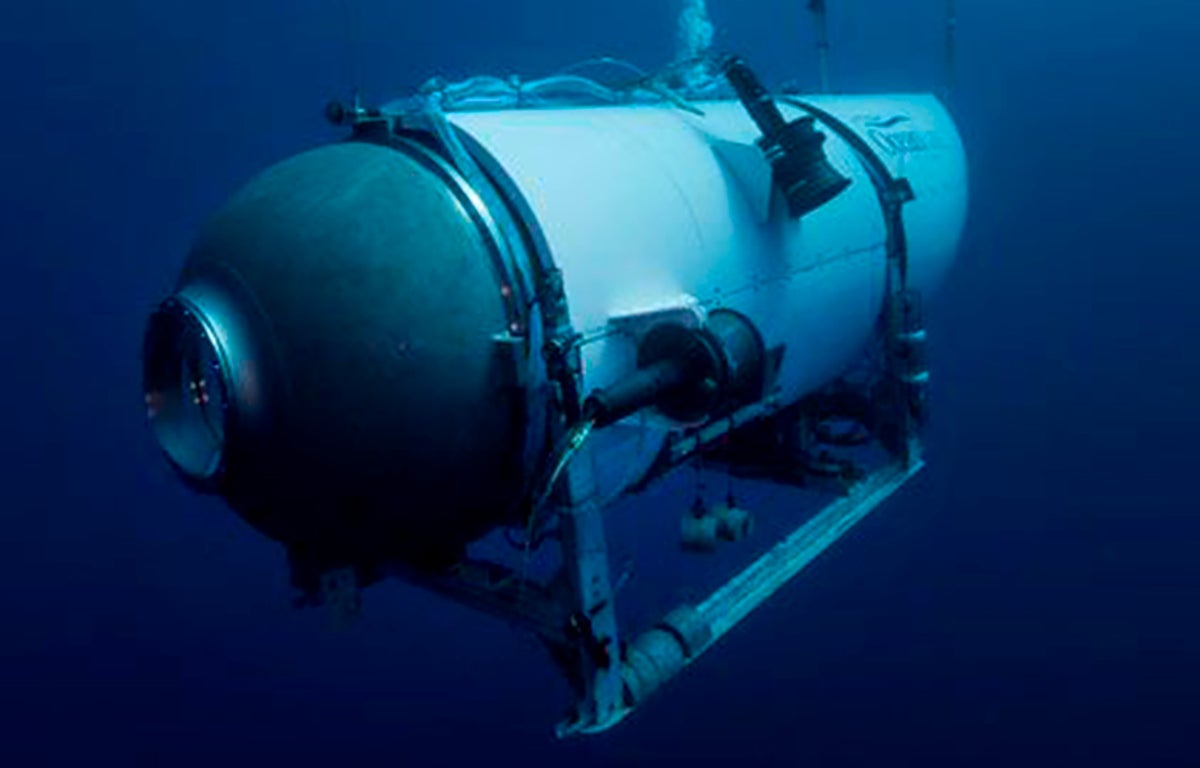
OceanGate's Titan submersible completed fewer than 15 per cent of its attempted deep dives to reach the Titanic wreckage located 12,500 feet below the ocean's surface, according to a report.
Five people, including British billionaire Hamish Harding, died after the submersible imploded during the underwater expedition on 18 June.
The others on board were OceanGate chief executive Stockton Rush, French diving expert Paul-Henri Nargeolet and Pakistani businessman Shahzada Dawood and his 19-year-old son Suleman.
The submersible previously reached the depth of the wreckage on "as few as 13" of the 90 trips undertaken by the company, according to a passenger's waiver seen by Insider.
The company had a success rate of 14 per cent and referred to the Titan craft as "experimental" three times in the four-page liability waiver.
The submersible began taking people to the Titanic wreckage in 2021 and according to the company's website, OceanGate completed more than 14 expeditions and 200 dives in the Pacific, Atlantic, and Gulf of Mexico using two submersibles.
It touted its craft as having a roomier cylinder-shaped cabin made of carbon-fibre – a departure from the sphere-shaped cabins made of titanium used by most submersibles. External experts have previously raised concerns over the construction and materials used in the sub.
From left, Shahzada Dawood, Suleman Dawood, Paul-Henri Nargeolet, Stockton Rush, and Hamish Harding
The 22-foot long, 10,432kg Titan’s larger internal volume was still crampt at its maximum capacity of five seated people.
The submersible was not certified or approved by any regulatory bodies, the waiver reportedly said. It also said that the submersible was "constructed of materials that have not been widely used for manned submersibles".
In a 2018 video posted to the company’s YouTube channel, Rush can be heard describing the glue used to hold the carbon-fibre submersible’s structure together as being “like peanut butter,” saying it was “pretty simple” and thicker than Elmer’s glue. Rush admits that “if we mess it up, there’s not a lot of room for recovery”.
Debris from the Titan submersible, recovered from the ocean floor near the wreck of the Titanic— (AP)
David Lochridge, the former director of OceanGate’s marine operations between 2015 and 2018, raised his concerns over the sub’s safety and says he was fired as a result.
After leaving the company, Mr Lochridge reportedly emailed his associate Rob McCallum – who later also left over safety concerns – to share his worry that Rush would get himself and others killed in a quest to satiate his “ego.”
While Mr Lochridge raised numerous concerns about the submersible during an inspection, his most serious concern was with the carbon-fibre material used to make the hull.
Brian Weed, a former passenger, told Insider that the sub had failed a test drive in 2021 because its thrusters stopped working and was stuck underwater for more than two hours. It eventually never made it further than 100 feet.
The Independent has reached out to OceanGate for a comment.




!["[T]he First and Fifth Amendments Require ICE to Provide Information About the Whereabouts of a Detained Person"](https://images.inkl.com/s3/publisher/cover/212/reason-cover.png?w=600)


